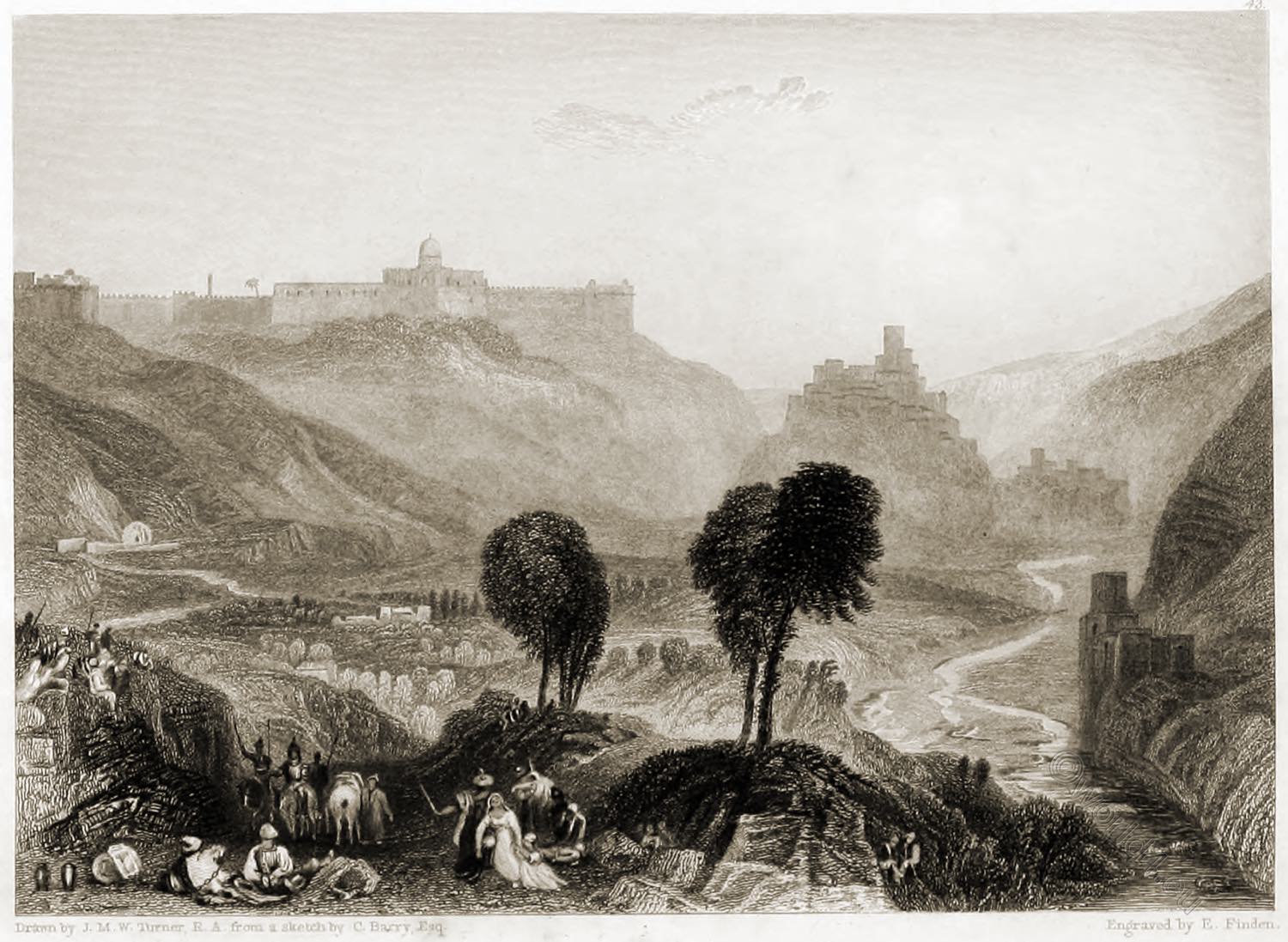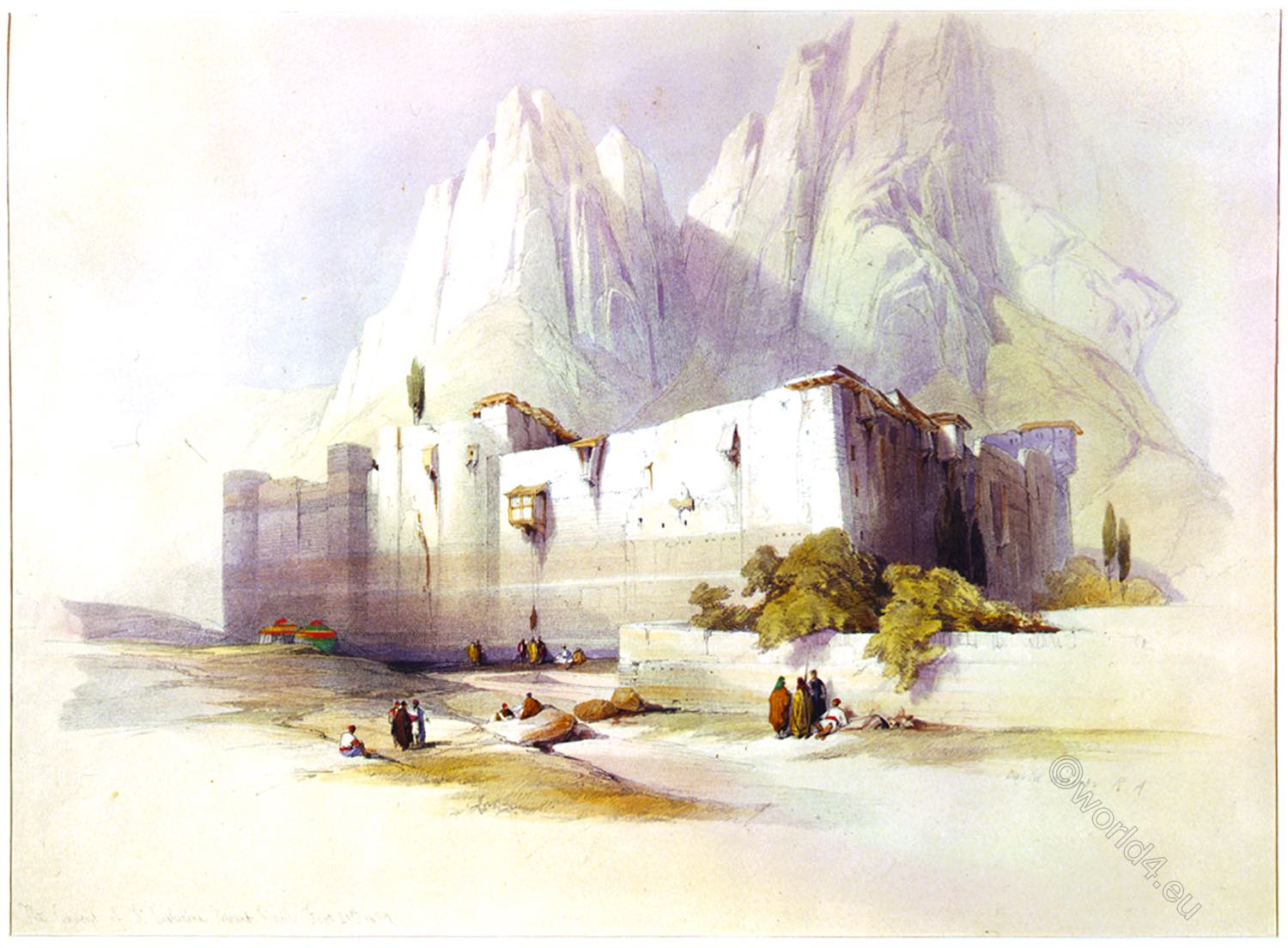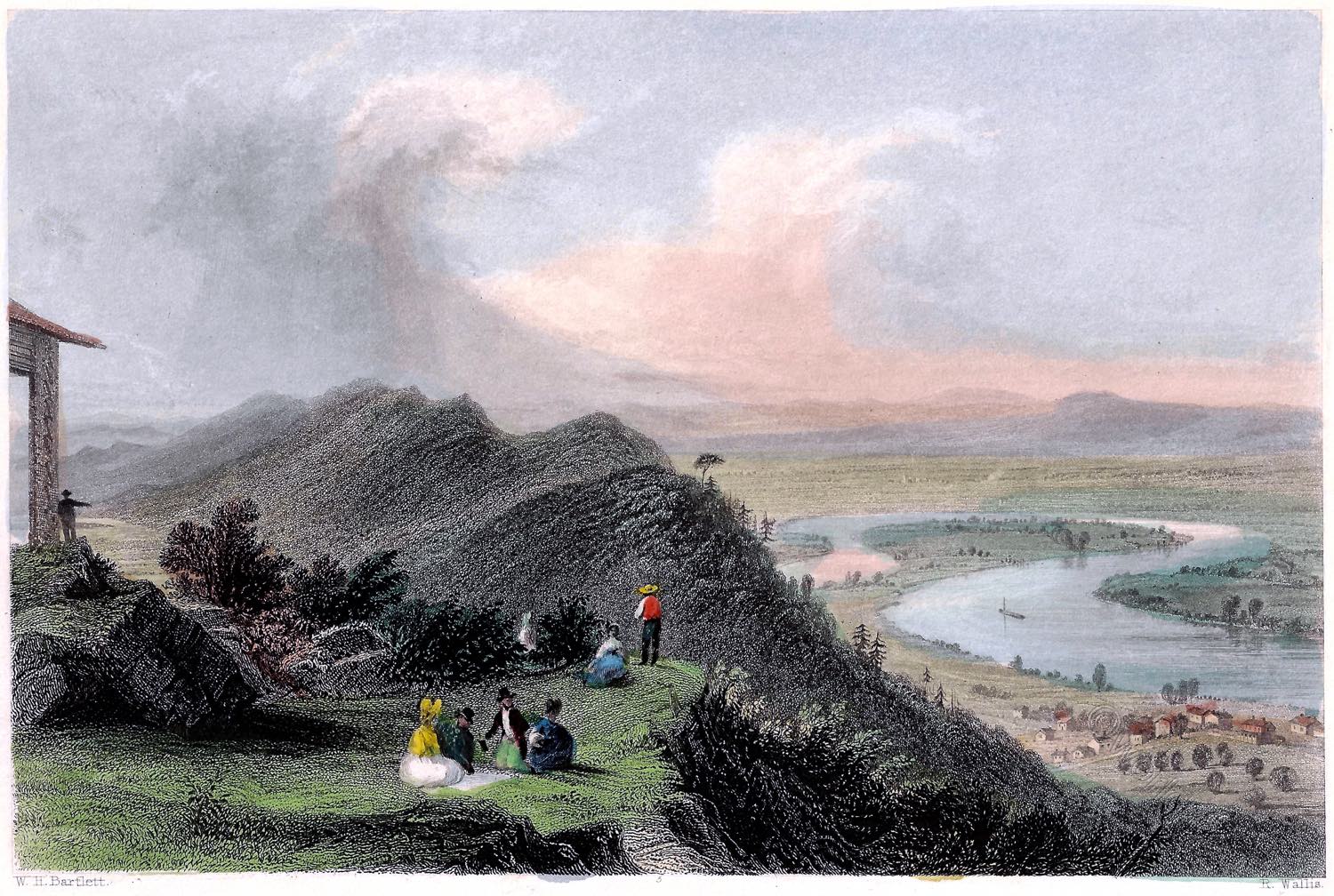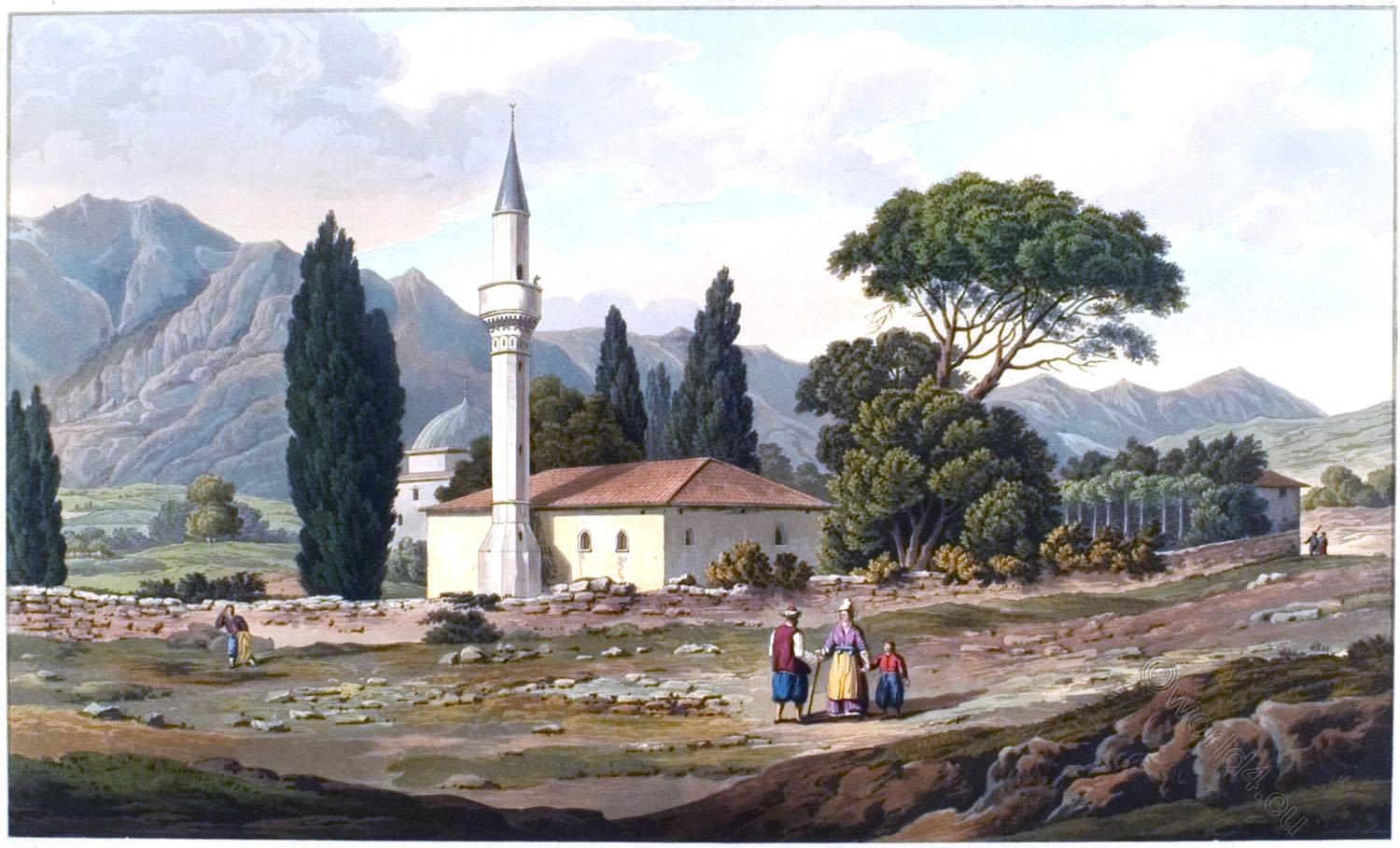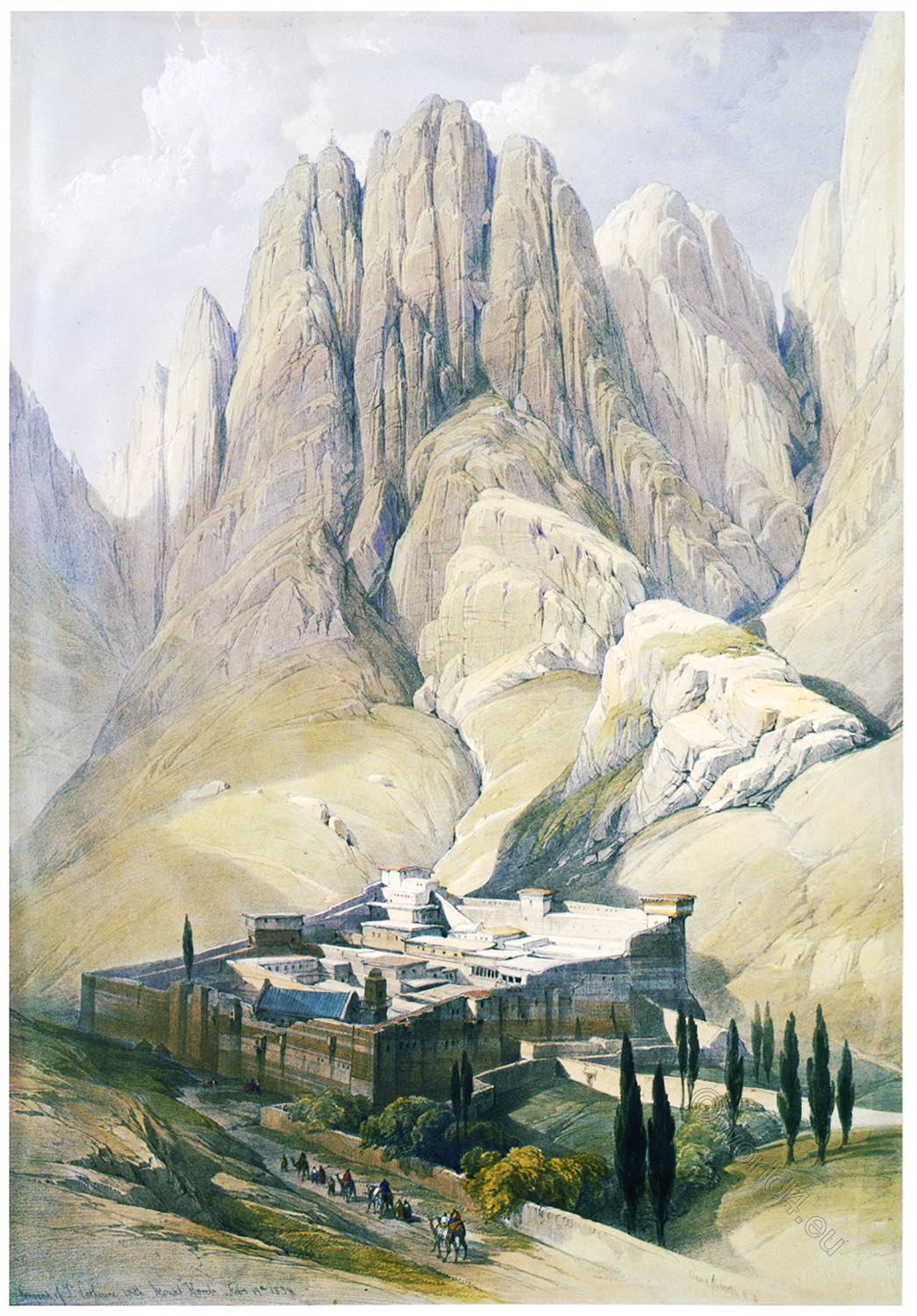In Greek mythology, a place called “Olympus” is the dwelling place of the gods and its summit was imagined to be filled with light. However, this mythical “Olympus” does not necessarily have the same meaning as the real mountain. It was not until the 5th century BC that Herodotus described the Thessalian Olympus as the dwelling place of the gods.
Mount Olympus is the highest mountain range in Greece. The massif, made almost entirely of Mesozoic limestones, is located on the east coast of Greece, in the border area of the regions of Thessaly and Central Macedonia, not far from the village of Litochoro, about 20 km south of the city of Katerini. In Greek mythology, Mount Olympus is the seat of the Olympian gods.
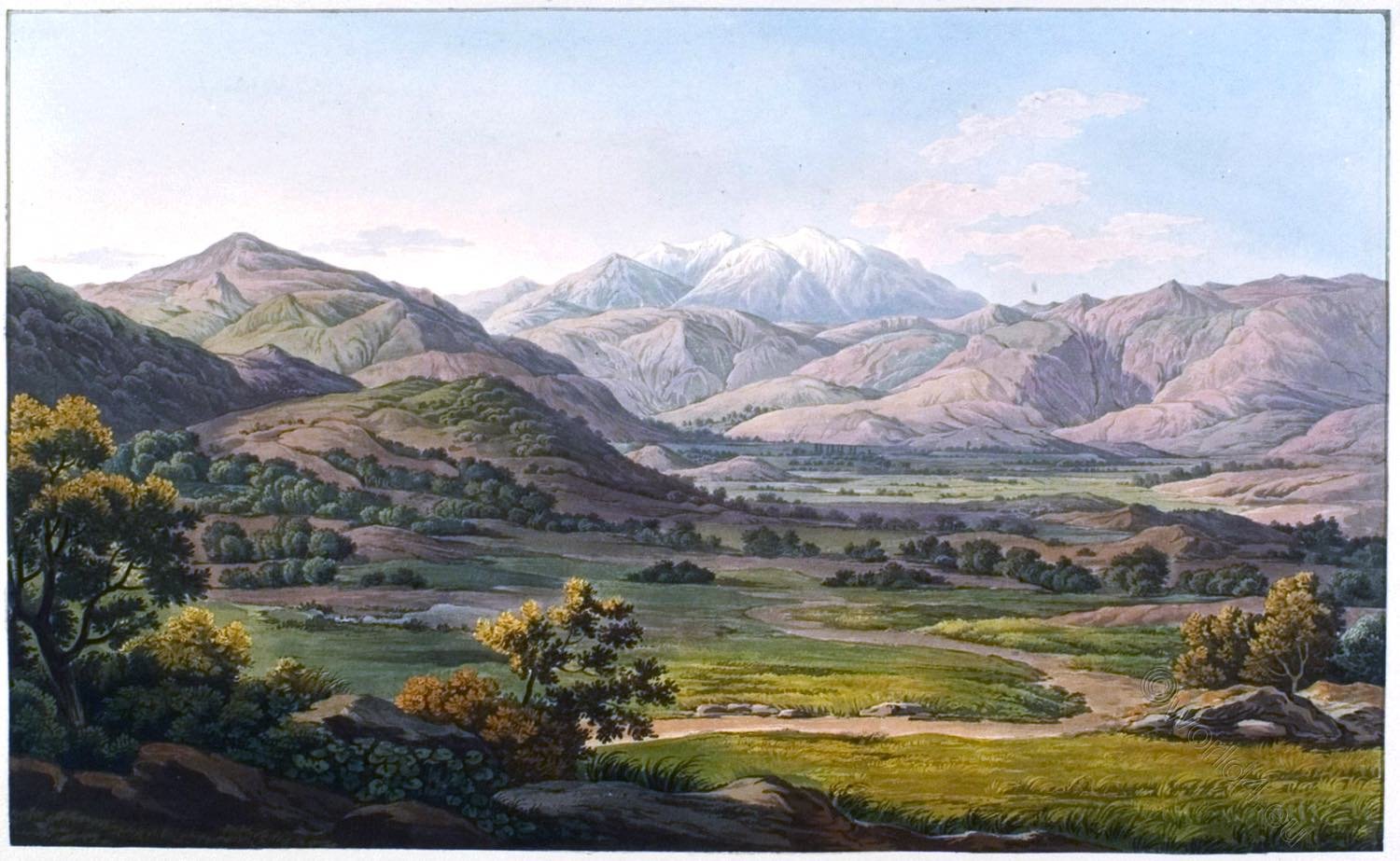
MOUNT OLYMPUS, AS SEEN BETWEEN LARISSA AND BABA
by Edward Dodwell.
MOUNT Olympus forms a gigantic mass, mid occupies a very extensive space. Its southern side, which is represented in this view, constitutes the boundary of Thessaly; while its northern base encloses the Pierian plain and the Macedonian territory.
To the west it branches out towards Mount Othrys, where its remoter swells are blended with those of Pindos, which terminates on the coast of the Adriatic, in the tempestuous heights of the Acroceraunian crags. Its rugged outline is shuttered into many summits, from which circumstance Homer gives it the epithet of (Greek …? Translation failed); and as it is never entirely free from snow, Hesiod depicts it by the characteristic attributive of (Greek …? Translation failed); while the epithets of (Greek …? Translation failed) and (Greek …? Translation failed) have been applied to its intricate glens and its dark forests. It still retains its ancient name, which is pronounced Olympos.
The lower range of hills that screens the foot of Olympos from the view is n ramification from Ossa, which is not so high as Pelion, and much lower than Olympos. It rises gradually to a point, which is apparently about five thousand feet above the level of the plain, but I speak only from conjecture.
The celebrated Vale of Tempe diffuses its charms over the space between Ossa and Olympus; and the river Pieneios, after disengaging itself from its confined channel between those mountains, flows through the Pierian plain, and enters the Thermaic gulf a few miles from Tempe.
Source: Views in Greece. Drawings by Edward Dodwell. Rod Well and Martin, London, 1821.
Discover more from World4 Costume Culture History
Subscribe to get the latest posts sent to your email.


